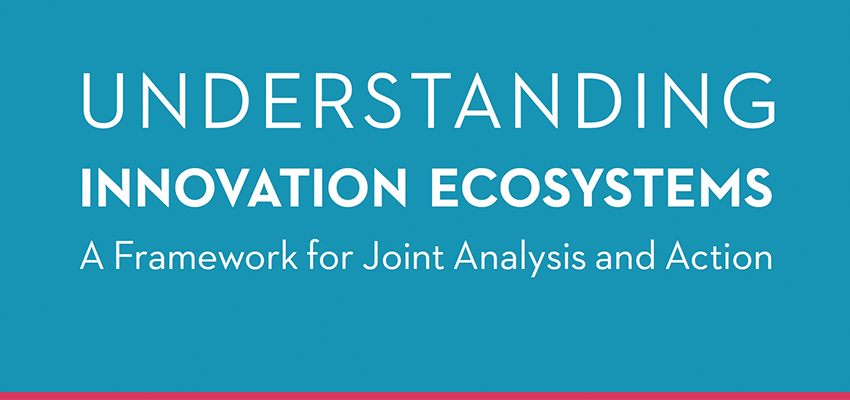
Understanding Innovation Ecosystems: A Framework for Joint Analysis and Action
Having trouble with the link above?
Introduction
Place-based innovation ecosystems play a crucial role in driving local and regional economic development. This role has been documented and understood for over 40 years in industrialized economies but is only starting to be appreciated in the context of emerging and developing economies. However, the past several years have seen an intensification of interest in innovation ecosystems among global development actors as well as practitioners and policymakers working across the Global South.
Whether at the municipal level, in places such as Medellín, Colombia and Guadalajara, México, or the national level in Rwanda, South Africa, or India, we see governments, multi-laterals, donors, and civil society actors embarking on initiatives to strengthen local innovation ecosystems. The International Development Innovation Alliance, for example, which includes many of the largest public and private global development agencies, has created a set of recommendations for why and how actors investing in economic development should support the strengthening of innovation ecosystems.
Within the past year, MIT D-Lab has been invited to play a role in some of these ecosystem-strengthening efforts. In contexts ranging from Oaxaca, México to Accra, Ghana, we have been asked to convene ecosystem actors and stakeholders in order to facilitate joint ecosystem strengthening work. In preparing for these engagements, we have researched the state of the field regarding both innovation and entrepreneurial ecosystems as well as existing ecosystem frameworks, models, and tools.
In doing so, it has become clear that much of the current thinking and practice related to these concepts is drawn from research on innovation processes and entrepreneurial clusters in highly developed economies — places like Silicon Valley and Kendall Square, Boston. Much less is known about innovation ecosystems in less-developed contexts in terms of how they can be characterized, how they function, and — most importantly — how they can be strengthened.
To that end, the Local Innovation Group at D-Lab has been conducting multi-year research on local innovation ecosystems in the types of contexts where D-Lab and our partners engage. This involves learning about diverse processes of ecosystem development through primary and secondary
case study research.
Based on this research, we have developed a framework for understanding local innovation ecosystems, which we share in this publication. We have found the framework, and accompanying visual model, to be a useful tool for orienting and organizing conversations among ecosystem actors on how particular innovation ecosystems are functioning, what their strengths and weaknesses are, and where opportunities for further development might lie.
This document shares this framework and how we have used it over the past year to catalyze ecosystem-strengthening efforts. We start by clarifying the concept of a “local innovation ecosystem” and presenting the core ideas informing the visual model. We then describe the model and each of its individual components. We follow with guidance from our research on best practices for conducting ecosystem strengthening work, and share three examples of how we have used the model to facilitate ecosystem-strengthening conversations in distinct local contexts.

